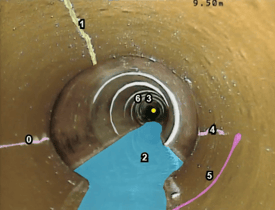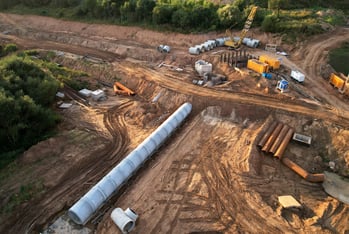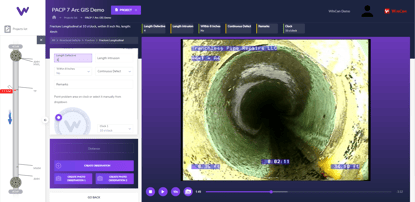The wastewater industry is seeing shifts in core workflows, creating trends toward more efficient tech and more resilient infrastructure. In particular, use of artificial intelligence (AI) will continue to spread as municipalities migrate toward predominantly cloud-based workflows. But beyond technology, the United States is putting renewed effort into rehabilitating infrastructure, with more cities investing in sustainable, resilient sewer systems with the ability to adapt in the face of extreme weather.
Migration to Cloud-Based Inspection and Enterprise Solutions
Digital workflows are slowly becoming the norm in the wastewater industry, allowing for the long-term archiving, mass transfer and high-speed processing of inspection data. Paper maps are on their way out for most municipalities, and the industry is seeing many transition from primarily desktop solutions to completely cloud-based applications, such as WinCan Web Flex.
As sewer teams work to bring massive amounts of asset and inspection data into the cloud, sewer inspection AI is making it easier than ever to sift through that data for new, valuable insights. These cloud-based solutions expedite both field and office workflows by creating direct pathways for data to travel between applications, enabling access when and where you need it. This year, expect more municipalities to migrate to cloud-based inspection solutions, where data is more accessible, secure and valuable.
Doubling Down on Emerging Wastewater Technologies

One of the biggest movements in sewer inspection is the adoption of AI in sewer software. In 2021, WinCan debuted its own AI in the form of Sewermatics data services, which helps bridge the gap for teams working to transition to digital, cloud-based workflows. Sewer professionals rely on AI and other emerging wastewater technologies to help build a more tech-driven industry without a greater demand for tech-literacy. Among these emerging capabilities, AI-powered defect coding is making the most impact, as it enables office teams to quickly process data to gather actionable insights.
Additionally, drones and mobile applications are making strides in the industry for their use in collection workflows. This is primarily a trend in exploration and innovation, which means equipment manufacturers and sewer software developers continue to refine workflows that incorporate these emerging technologies and boost efficiency at every level.
Uptick in Municipal Sewer Rehabilitation Projects
In November 2021, the Infrastructure Investment and Jobs Act passed in the United States, directing funding toward clean water programs, as well as resilient storm water and wastewater infrastructure. This new funding will no doubt enable system operators to take on more and backlogged rehabilitation projects.
Digital sewer rehabilitation applications, like WinCan’s rehab planning module, have made it easy for engineers to compare work orders and quickly identify the right course of action for any job. This not only expedites the rehab workflow, but helps keep costs down and crew efficiency high. Additionally, increases in severe weather have led to a demand for more responsive, efficient rehab services, particularly where sustainable and resilient infrastructure is lacking.

Renewed Focus on Sustainability and Resiliency
Our communities are at higher risk of extreme, climate-related weather events than ever before. Municipalities must be proactive in establishing sustainable and resilient workflows and infrastructure. This year, the industry is likely to see a renewed interest in the long-term investments associated with protecting communities and vital assets from the effects of extreme weather. Municipalities are exploring new ways AI and digital twins can empower predictive modeling ahead of climate-related weather events. Read more about how AI helps prepare sewers for severe weather.
Request a demo to learn why more sewer professionals rely on WinCan to get them through the year:






